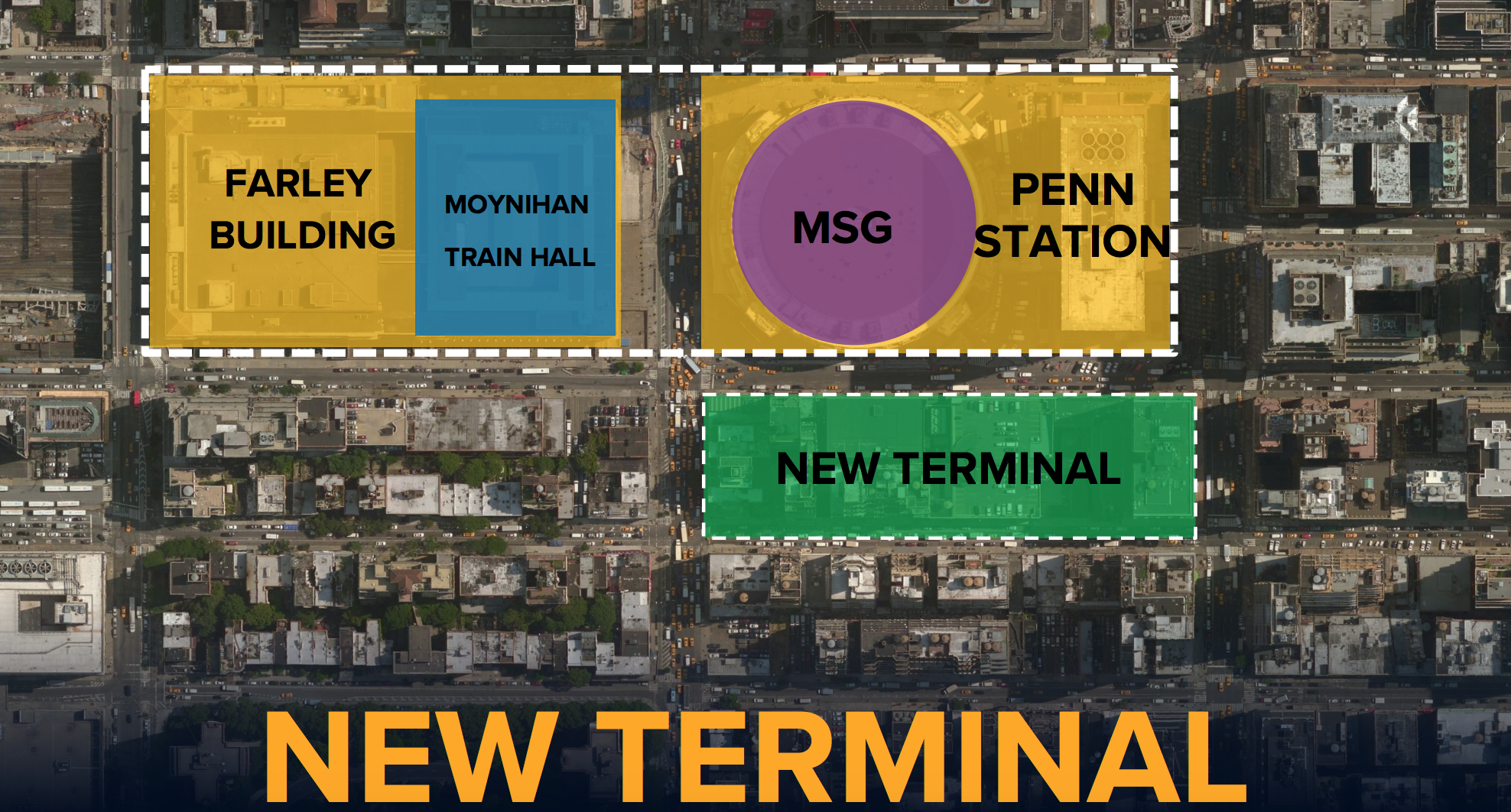Running commuter rail trains all the way from New Jersey to Long Island or Connecticut is not possible without a bigger Penn Station, according to a new analysis done by Amtrak, NJ Transit and the MTA that justifies their own long-sought push for a larger train station.
The three rail operators hope the report can put to bed the question of whether they can implement "through-running" within the current footprint. The transit hub currently serves as a terminus for NJ Transit and the Long Island Rail Road and will soon also be the last stop for Metro-North's New Haven Line.
Any possibility of those trains continuing onto the other railroads' territory will require more train station, the report said.
"There is no combination of through-running tracks and platforms within the footprint of the existing station that can meet the operational performance needs and still be constructed without massive and unacceptable disruption," Amtrak wrote in the executive summary of the 200-page report, which the other two agencies co-signed.
"There is no lesser modification plan that can be constructed within acceptable limits of disruption of service and still meet the operational performance needs," the report said.
Right now, 24 trains per hour can run in and out of Penn Station. That number could double when the forthcoming Gateway Tunnel project adds two more train tracks underneath the Hudson River. Amtrak's analysis put two through-running concepts to the test to see if either one would meet the goal of sending 48 trains per hour through Penn Station.
Both concepts in the report would reduce the number of tracks at Penn in order to widen the station's platforms, which are currently too narrow to allow the speedy loading and unloading of riders from trains — a necessity to make sure through-running trains don't get held up before heading to their next step.
First, the report rules out completely redoing Penn Station's track geometry by demolishing and rebuilding the platforms and reducing the number of tracks from 21 to 17. While doing so would create the track geometry to double the capacity at the station, it would require reducing train service by 30 percent over 10 years of construction.
Under the second concept, the railroads would deck over existing tracks to widen the platforms, reducing the number of tracks from 21 to 12. Even though that almost halves the number of tracks available to use, the report found the new geometry would allow for 40 trains per hour to run through Penn — below their goal of 48.
Neither concept would actually allow for 48 trains per hour because there still wouldn't be enough tunnels to accommodate both peak and reverse-peak (out of the city) trains: NJ Transit trips headed from Long Island to New Jersey and LIRR trips headed from New Jersey to Long Island would eat into the available tunnel space that trains with many more riders take.
"The return trip to New Jersey, as it passes through the East River Tunnel back towards Penn Station, would claim a westbound slot in the East River tunnel that otherwise could be used by mo"re heavily patronized trains from Long Island in the peak direction of LIRR travel," the report said.
"Similarly, LIRR morning peak trains turning back at a trunk line station in northern New Jersey would claim an eastbound slot crossing the Hudson River that then would not be available for NJ Transit peak direction trains from the New Jersey suburban branch lines."
That effectively leaves only one path forward in the eyes of the railroads: expanding Penn Station. It is, conveniently, the same path forward the railroads have pursued since disgraced ex-Gov. Andrew Cuomo revealed plans for "Penn South" in 2020. That plan would require demolishing a full city block to the south of Penn Station, to the chagrin of Midtown residents unhappy about the prospect of giving up homes or businesses for the footprint of a new station.
Gridlock Gov. Hochul, Cuomo's successor, has continued to bang the drum for an expanded Penn Station, adapting Cuomo's plan to fund New York's share of the $16 billion project by using "payments in lieu of taxes" that would flow from the construction of new office towers. That plan is currently dying a slow death as New York City tries to figure out what to do with a glut of unfilled office space in the wake of the Covid-19 pandemic.
But even if Amtrak, New Jersey Transit and the MTA agreed that through-running could work in the existing Penn footprint, the railroads claim the whole project has its own future pitfalls. Per the report, no one at the railroads envisions something like an LIRR train that runs from Hempstead to North Brunswick. Any service like that would be part of a new "regional metro network" that currently doesn't exist.
According to a consultant who worked on the study, figuring out how to make that happen is someone else's governance problem — a problem that perhaps none of the three railroads that call Penn Station home seem to actually want to solve.
"Penn Station has to enable [through-running], but work at Penn Station can't make the regional network happen," said Foster Nichols, one of the report authors. "Who makes that decision is a regional question. And one of our problems is that solving that regional rail map isn't directly aligned with any of the railroads or the agencies you know. That is one of the reasons why things are the way they are."






